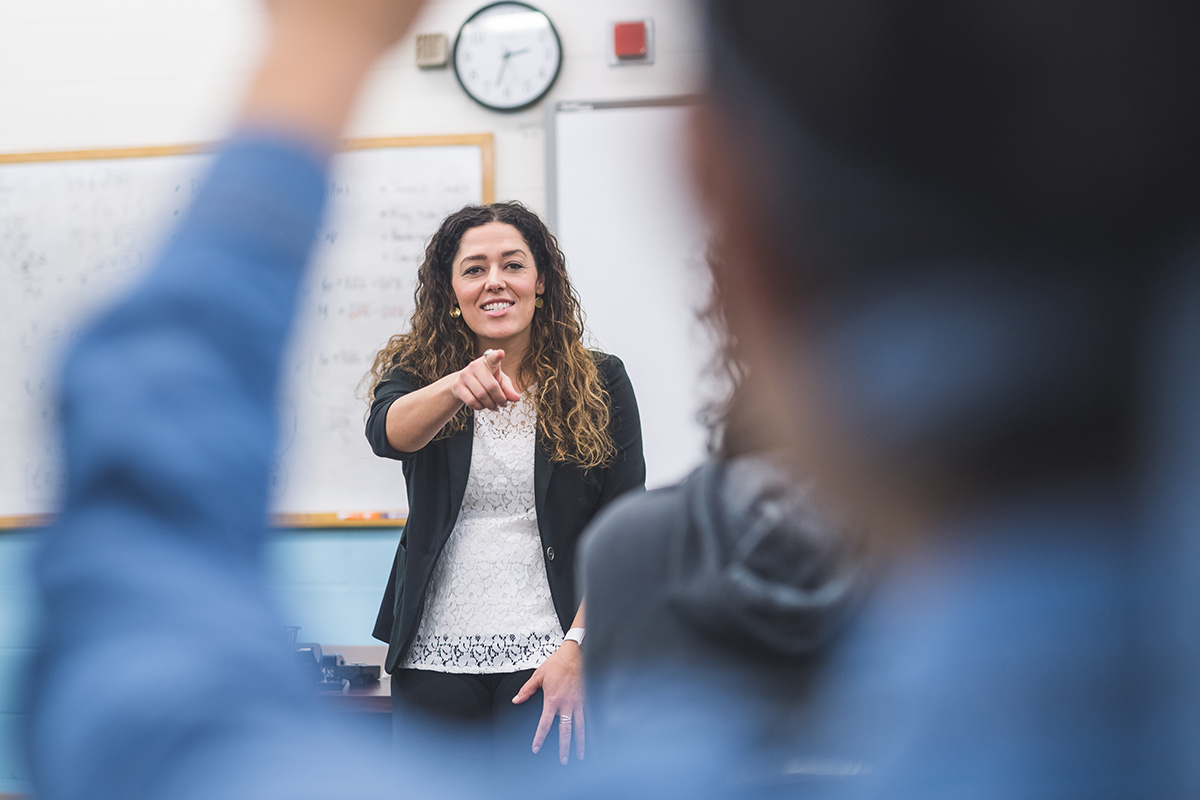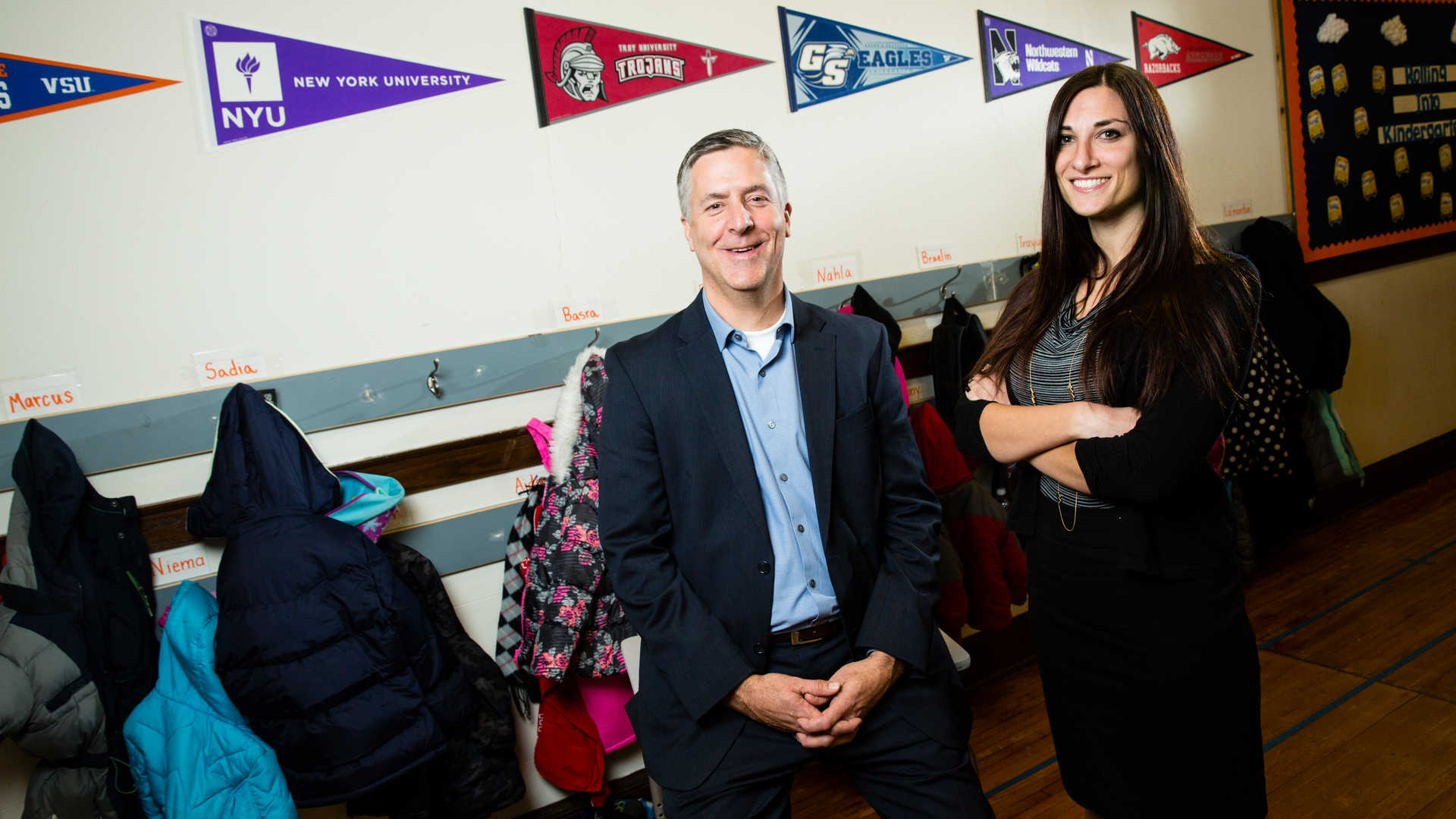Authored by Marci Levy-Maguire '23 EdD
Sponsored by the Educational Specialist with K-12 Administrative Licensure degree program in the School of Education at the University of St. Thomas
“Whoever controls the education of our children controls the future.”
-Wilma Mankiller, First Woman Chief of the Cherokee Nation
Women have been persistently underrepresented among K-12 school superintendents throughout the nation and in Minnesota, even as they comprise 76% of teachers throughout the United States. Since 2010, no more than 28% of superintendents have been women (Zippia, 2023). In 2022, women made up 27% of Superintendents nationwide (ILO Group, 2022) and 31% in the regional Midwest (Modan, 2022). While the percentages of women superintendents nationwide increased from 14% in 2000 to 24% in 2010 (Kowalski et al., 2010), numbers have remained relatively stagnant ever since. During the COVID pandemic, the situation worsened. Among the 500 largest school districts in the United States, 246 districts transitioned to new leadership between March 2020 and September 2022. Within this group, 94 women superintendents left their positions, and 66% of their replacements were men (ILO Group, 2022). Nationwide, women K-12 school district superintendents earned an average 6% less than men superintendents in 2021 (Zippia, 2023). Among state superintendents, women earned an average 12%-26% less than men (ILO Group, 2022).
“Where gender inequality exists, it is generally women who are excluded or disadvantaged in relation to decision-making and access to economic and social resources.”
-United Nations Population Fund
In Minnesota, where women across career fields earn less than men regardless of educational attainment (Women’s Foundation, 2022), the gender gap among K-12 school district superintendents is even greater than the region or country. Since at least 2014, 20% or fewer superintendents have been women (Mortensen, 2019; MASA, 2022). As of 2019, only 8% of licensed women superintendents were actively using their license (Mortensen, 2019). In a recent survey of women educational leaders in Minnesota by the Society for Women Educational Leaders, 90% of respondents believed it is extremely or very important to decrease the gender gap among Minnesota superintendents (Levy-Maguire et al., 2023). When asked what they see that tells us we have room to improve gender equity and equality in Minnesota school and district leadership, respondents said:
- Gender inequality
- Hostile work environment/Boys Club/Exclusion of women/Microaggressions
- Disparity between the percentages of women teachers and women secondary leaders/district administrators
- Disparity between the percentages of women teachers and women superintendents
- School board/community bias
- Superintendent search process
Fewer than 40% of respondents found the job of superintendent very or extremely appealing. Those who did cited the ability to participate in challenging, systems-changing, visionary work; the ability to influence; and impact on student outcomes and opportunities as the primary attractions of the superintendent position. Among the 61% of respondents who found the role somewhat or not appealing, stated reasons included:
- Politics
- Lack of work-life balance
- Emotional stress
- Lack of interaction with students (Levy-Maguire et al., 2023)
- Inability to institute significant change

In Minnesota, local school boards are responsible for hiring and supervising superintendents, so the school board is the primary, but not sole, locus of control. Below are specific strategies (ILO Group, 2022; Levy-Maguire et al., 2023; Sawchuk, 2022b; St. Catherine’s University, 2022) for school boards to decrease gender gaps in their own contexts.
Strengthen the Pipeline of Women Educational Leaders
- Analyze gender and pay equity at all levels of your organization, both currently and historically
- Set goals and develop action plans to decrease gender gaps and pay inequities
- Provide and/or support opportunities for learning, coaching, networking, and mentoring of women leaders at all levels of your school district - especially in superintendent-specific competencies
- Model and support leadership that offers a healthy work-life balance
- Develop and/or revise policies to add more support for parents and caregivers
- Participate in and provide opportunities for ongoing diversity, inclusion, and equity training and discussion
Review and Revise Hiring Practices
- Set clear, public goals for gender equity in hiring practices
- Ask hiring firms to include equal numbers of male and female candidates/Contract with hiring firms that attract women candidates
- Be transparent and check your biases at all steps of the hiring process, particularly caregiver bias, motherhood bias, “women’s work bias,” and intersectional bias
- Ensure pay equity
- Develop hiring protocols focused on job-specific skills (avoid popularity contest)
- Analyze job description, application, interview, and hiring processes to acknowledge and address biases and aim for healthy work-life balance
- Avoid double standards for men and women in formal and informal aspects of hiring process
Provide Ongoing Support to Superintendents
- Model good governance and respectful communication
- Be clear about what you want
- Support networking, relationship development, and mentoring
- Create family-friendly structures and policies, including expanded paid sick, family, and medical leave
- Check your biases in supervision & evaluations
- Beliefs > Language > Action → Outline norms for board-superintendent relations
- Strengthen the professional networks of women superintendents
“everyone has benefited from the cultural revolutions put in place by contemporary feminist movement. It has changed how we see work, how we work, and how we love”
-bell hooks
As we continue to move through the era of a global COVID-19 pandemic and the death of George Floyd in our backyard, we already see work, do work, and love differently. Decreasing the gender gap among Minnesota superintendents will bring positive change to Minnesota schools that are struggling with students’ mental health concerns and academic engagement (Minnesota Department of Health, 2022), teacher and staff shortages (Professional Educator Licensing and Standards Board, 2023), and the three-year trend of declining public school enrollment (Minnesota Department of Education, 2023).
We all play a role in supporting equity and equality in our personal and professional realms, both for the current and future generations of women. What is one action you could take today to change or influence systems, structures, policies, or practices to decrease gender gaps in your own context?
References
hooks, b. (2000). Feminist theory: From margin to center. South End Press.
ILO Group. (2022). The superintendent research project: Assessing persisting gender disparities in K-12 education leadership. https://www.ilogroup.com/wp-content/uploads/2022/12/The-Superintendent-Research-Project_Dec-2022-Update.pdf
Kowalski, T. J., McCord, R. S., Peterson, G. J., Young, P. I., & Ellerson, N. M. (2010). The American school superintendent: 2010 decennial study (A report from the American Association of School Administrators). Rowman & Littlefield Education.
Levy-Maguire, M., Hahn, H., & McAndrews, A. (2023, January, 12). Decreasing the gender gap among Minnesota superintendents [Conference presentation]. Minnesota School Boards Association Conference, Minneapolis, MN.
Minnesota Association of School Administrators. (2022). MASA member data [Infographic].
Minnesota Department of Education. (2023). Minnesota Department of Education releases enrollment data for the 2022-2023 school year. https://content.govdelivery.com/accounts/MNMDE/bulletins/34a6a0f#:~:text=In%20the%202022%2D23%20school,Governor%20Tim%20Walz%20and%20Lt.
Minnesota Department of Health. (2022). 2022 Minnesota student survey results released. https://www.health.state.mn.us/news/pressrel/2022/stsurvey122322.html
Mortensen, M. (2019). Female superintendent perceptions of challenges in seeking and serving in the position of superintendent of schools [Unpublished doctoral dissertation]. St. Cloud State University.
Professional Educator Licensing and Standards Board. (2023). 2023 biennial report: Supply and demand of teachers in Minnesota. https://mn.gov/pelsb/assets/Supply%20and%20Demand%202023_tcm1113-562338.pdf
Sawchuk, S. (2022). Why aren’t there more women superintendents? Education Week. https://www.edweek.org/leadership/why-arent-there-more-women-superintendents/2022/03
Sawchuk, S. (2022b). Vision, your house in order, and an extra $20K: What it now takes to hire a superintendent. https://www.edweek.org/leadership/vision-your-house-in-order-and-an-extra-20k-what-it-now-takes-to-hire-a-superintendent/2022/03
St. Catherine University. (2022). Gender bias in the workplace: Bridging the gap for women in business. https://www.stkate.edu/academics/women-in-leadership-degrees/blog/gender-bias-in-the-workplace
United Nations Population Fund. (2005). Frequently asked questions about gender equality. https://www.unfpa.org/resources/frequently-asked-questions-about-gender-equality
Women’s Foundation of Minnesota. (2022). 2022 status of women & girls in Minnesota. https://wfmn.wpenginepowered.com/wp-content/uploads/2022/03/WFMN-2022-Status-of-Women-Girls-in-MN.pdf
Zippia. (2022). School superintendent demographics and statistics in the US. https://www.zippia.com/school-superintendent-jobs/demographics/
